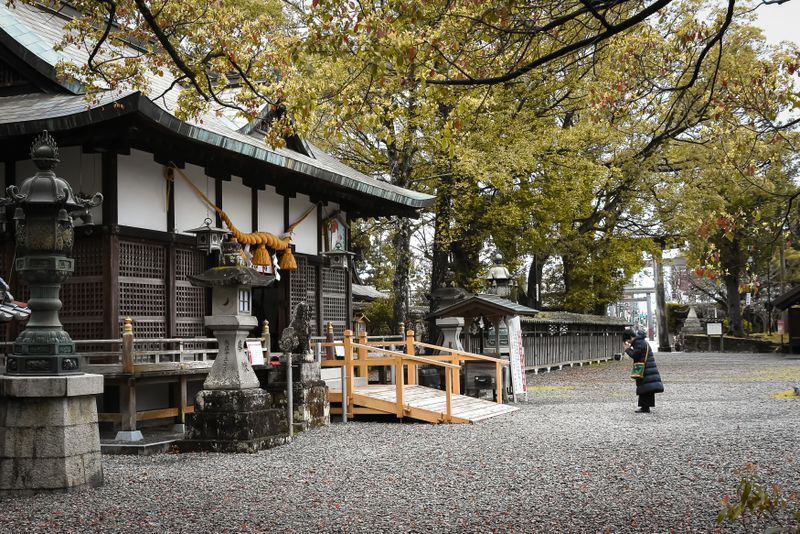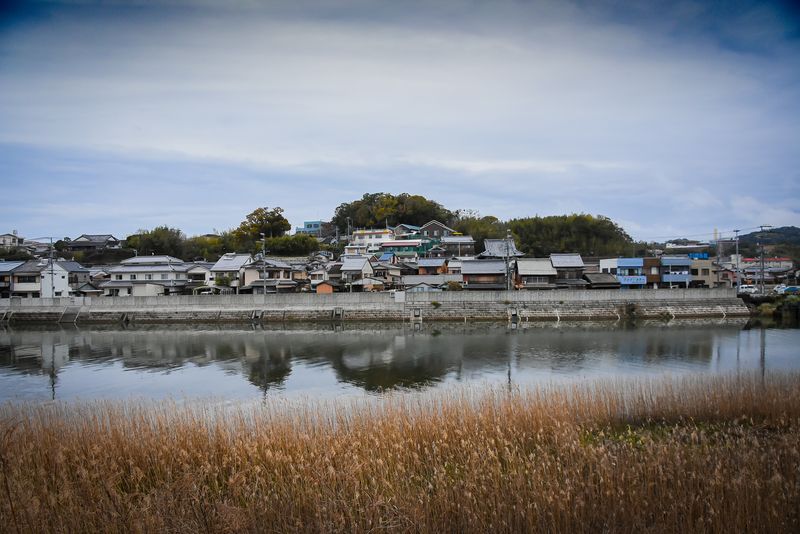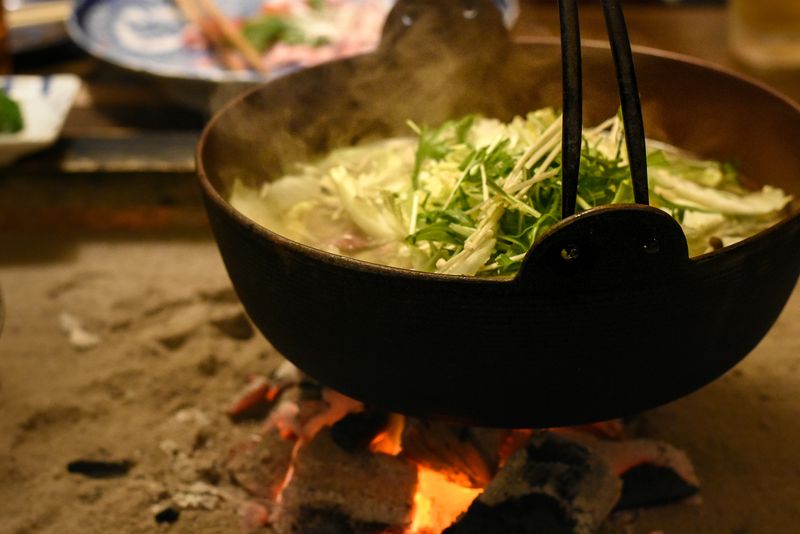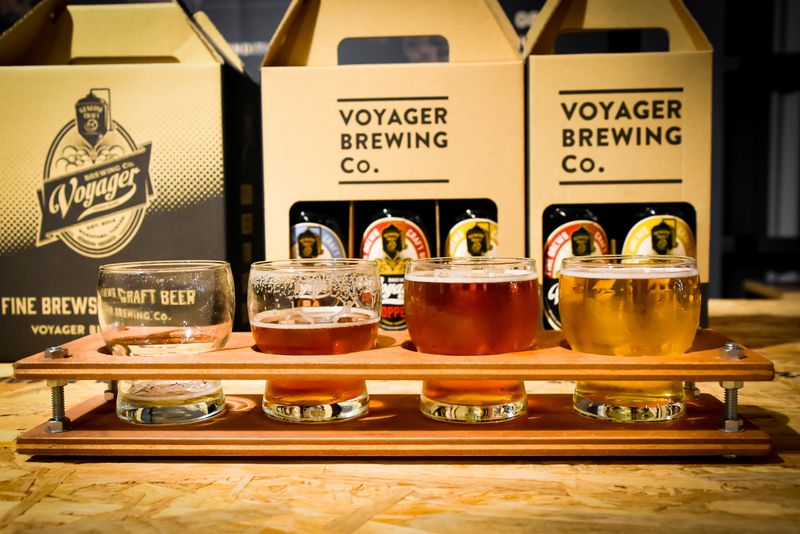May 27, 2020
Tanabe City offers gateway to great experience before entering the Kumano
Gallery - Tanabe City, Wakayama Prefecture
Many visitors to the city of Tanabe in Wakayama Prefecture, western Japan, arrive unplanned. That's no problem though, for coastal Tanabe City, known as the gateway to the Kumano pilgrimage routes, has great experiences to offer and a savvy tourist infrastructure and friendly locals to point visitors in the right direction.
*Editor's note: We encourage readers to follow guidelines issued by the authorities in Japan with regards to the novel coronavirus and travel in the country. At the appropriate time when the situation regarding the virus allows we hope you have the chance to enjoy visiting some of the locations covered below. We hope this article and video can bring you some enjoyment and practical information in the meantime.
Three-day / two-night stay in the city of Tanabe:
Despite the bracing wind racing through the torii of Tokei Shrine we roll up our sleeves and set about the purification process using cold water from the fountain by the shrine entrance. The Guji, chief priest, is on hand with kind instruction. “Back in the day pilgrims getting ready to enter the Kumano would undertake purification in rivers,” he tells us. The fountain is cold enough, thanks!
A visit to the UNESCO World Heritage-listed Tokei Shrine is the last point on an itinerary that has covered three days, two nights in the city of Tanabe in Wakayama Prefecture, western Japan.

With a population of around 72,000 Tanabe is the largest city of the southern Kii Peninsula. The coastal city is also known as the gateway to the Kumano, the ancient name for the mountainous, densely-forested southern region of the peninsula and the object and destination for pilgrims and their pilgrimages over the centuries.
Dating back around 1,600 years, Tokei Shrine -- a recent addition to UNESCO’s Sacred Sites and Pilgrimage Routes in the Kii Mountain Range -- is a derivative of Kumano Hongu Taisha, one of three shrines that form the Kumano Sanzan, the beating spiritual heart of the Kumano and the geographical focal point for the established pilgrimage routes, the Kumano Kodo. Deities of the Kumano are enshrined here in Tokei Shrine so in that sense this is a chance to pay one’s respects before even strapping on the hiking boots.
In fact, you really don’t have to enter the Kumano to feel its presence in town -- the cloak of its influence spreads over so much of Tanabe. It’s in the lingering mountain mist seen through the gaps between buildings. It’s the raison d'être of the city’s award-winning, community-driven, sustainably-minded tourism marketing. And it’s on the lips of the local business owners who when asked about foreign visitors to town invariably answered, “Yeah, they come here for the Kumano.”

It’s perhaps also behind the fact that most foreign visitors arriving in the city of Tanabe do so without much of a plan other than to hit the pilgrimage trail, according to our fixers in town from local newspaper Kii Minpo.
We arrived similarly unplanned but were quickly armed with a myriad of things to do, and how to do them, in Tanabe courtesy of the city’s impressive stations of tourist support -- Tanabe City Tourist Information Center, Kumano Travel and Pocket Park.
It’s oddly fitting that a city which serves many as the pause before the foot-pouding of a pilgrimage trail should be so great to explore by bicycle ... and, whisper, assisted bicycle at that. Pick one up from the Tanabe City Tourist Information Center next to the train station.
With the mountains of the Kumano being so magnetic it can be easy to forget that Tanabe has a beach, and a fine one too. Ogigahama is an easy peddle from Kii-Tanabe Station and has a youthful energy thanks to its oceanfront basketball courts and a skate park.
It’s here by the beach that practitioners of Aikido make a stop on their own pilgrimage, of a kind. Founder of the spiritually-minded martial art, Morihei Ueshiba (1883 - 1969) who was born in the city of Tanabe, is represented here on the oceanfront in a glorious statue -- a portrait in bronze, arms raised and gaze drawn to … the Kumano?

(Practitioners of aikido come to the city of Tanabe in Wakayama Prefecture to pay tribute to its founder Morihei Ueshiba)
Ueshiba’s grave can be found at the city’s Kozanji Temple, across the Aizu River, the beautiful grounds of which reward any visit.
Tanabe is torn between the open ocean and rugged mountains. It’s a geographical compromise that in the most practical terms shapes much of the city, it’s culture and produce.
Not far from Ogigahama is Kamaboko Dori, a street named after the processed seafood popular in Japanese cuisine. In a network of old streets laid out to confuse would-be attackers of Tanabe’s former castle, stores like Tanaume continue traditional production processes, passed down over generations to produce one Tanabe’s most celebrated souvenirs, nambayaki.
Up in the mountains, in the city’s Akizugawa district, long-time residents and returnees to Tanabe brave the blazing temperatures emerging from kama, traditional kilns, in order to produce binchotan, a kind of charcoal the use of which is widespread and celebrated across much of Japan.
Those who don’t like to get their hands dirty can sample binchotan in a variety of gentler forms at the Kishu Binchotan Memorial Park where a restaurant serves binchotan ramen and cake. Next door the binchotan cookies look like the real thing, and are almost as hard!
Evenings in the city of Tanabe revolve around Ajikoji, a scene about as far removed from the spiritually-inspired suffering demanded of the original Kumano pilgrim as it seems possible to get.
Here in an atmospheric warren of streets just south of the station, some 200 watering holes keep locals and travelers alike fed, hydrated (of a kind), and entertained. What soul searching takes place here extends little further than the bottom of the beer glass.
“The bars of Ajikoji haven’t been established for travelers, but travelers can come and enjoy them. In this way they get an authentic experience,” said our local fixer.
There’s a lot of “authentic” to choose from then in an area that first started to take root after the completion of Kii-Tanabe Station in the early 1930s, with bars set up to service cargo workers that the station brought into town. The Ajikoji moniker was adopted around 25 years ago and today there are few, if any, places like it in the whole of Wakayama Prefecture.
We had our dinner in izakaya Toraya, a former private home converted into an eatery around five years ago. We sat around the izakaya’s irori, sunken hearth, and took turns in dipping our shabu-shabu pork into the boiling pot. Chef Masafumi Kinoshita brought out servings of hirome seaweed unique to the region. Dipping it into the shabu-shabu water changes the color in an instant and the crunchy texture goes well with the ponzu vinegar.

(Cooking over the irori at izakaya Toraya in Tanabe's Ajikoji entertainment area)
“It’s washoku (traditional Japanese food) but we can customize it according to the needs of foreigner diners. At the same time we can offer them this Japanese-style space,” said Kinoshita who recommended diners try the fish here, “grilled, boiled, deep-fried as tempura, and the sushi.”
On our last night in town we resisted the lure of Ajikoji opting instead to enjoy our “one for the road” at the facility of Voyager Brewing Co., west of downtown Tanabe. In an airy loft space overlooking the brewery’s shining tanks we supped on a taster set of the craft brewer’s four beers, including the latest addition to the line-up, the light and breezy “Thruster.”

(One down, two and a bit more left for the road, Voyager Brewing Co., Tanabe City)
Voyager President, Koji Manabe explained that the inspiration behind the brewery’s name and branding is the Voyager space program launched from the U.S. in the late 1970s. A program the probes of which are still exploring deepest darkest space to this day.
It’s a grand vision, but not the only one to be found in unassuming Tanabe City. From the skill and ingenuity it takes to harness the vast ocean and rugged mountains, to giving birth to a martial art practiced around the world and an approach to sustainable tourism studied around the world, there must be something in the water here. Or maybe it’s the inspiration of the Kumano.



0 Comments